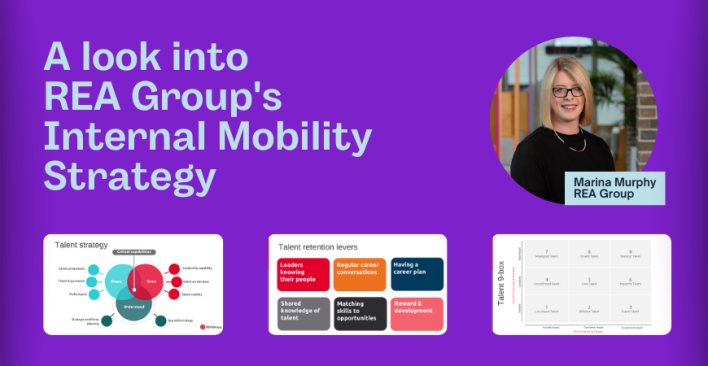I Learned Everything I Needed To Know About Recruiting From Footy

With the AFL and NRL seasons winding down in Australia and the MLB baseball season winding down in the USA, most corporate recruiters that are also sports fans will have some free time on their hands. And I recommend that they use that free time for some “cross-industry benchmarking”, which is where you discover and adapt the best practices from another industry to your firm. And in this case, the industry to “borrow from” is professional sports.
The sports model
In case you’re not aware of it, the “professional sports recruiting model” is literally the most advanced recruiting approach on the planet. Why? Well, first because everyone realizes that it’s not the shoes or the energy drinks that wins matches. Instead, it’s “the talent” that’s the “key success factor” for winning. Because recruiting players like Nat Fyfe and coaches like Wayne Bennett make such a huge difference, the approach that is used to recruit them has to be extraordinarily well thought out and powerful. And I have found that despite the numerous recruiting restrictions in professional sports, most of the recruiting principles that are used there can be successfully adapted to make corporate recruiting and talent management more effective. So if you are a corporate recruiting leader or a hiring manager, drop your resistance to “sports analogies” because professional sports teams are multibillion-dollar businesses with the same economic “bottom line” and the need to dominate competitors as your “corporate business”. So I urge you to take a few minutes to examine some of the recruiting lessons that you can learn from professional sports around the world.

The Top 10 Lessons That Recruiting Leaders Can Learn From Professional Sports
Here are the lessons that corporate leaders can learn from professional sports, with the most important ones listed first.
1. Recruiting is the highest impact function
In most professional sports, recruiting is literally the number one highest impactful function. If you successfully recruit a Leigh Matthews Trophy winner or a Grand Final winning coach to your AFL team, there is no doubt that you will be considered to be a hero by everyone. While in the corporate world many focus on “developing” internal talent, in basketball for example you wouldn’t even consider recruiting a 6 foot player and then try to “develop them” into a 7 footer.
Yet in sports, the focus is almost exclusively on recruiting talent that is already developed and only needs good coaching to make a contribution.

Lessons to be learned
Unfortunately in the corporate world, recruiting leaders have failed to demonstrate the real business impacts of recruiting. As a result, it is often underfunded and under-recognized. This is even though the Boston Consulting Group used data to determine that recruiting is literally the #1 people management function (out of 22) with the highest measurable impact on increasing corporate revenue and profit margins.
Recruiting leaders need to learn that quantifying recruiting results in dollars and showing the impact that recruiting has on corporate goal attainment is essential if they are to get the respect and the funding that they deserve.
2. Positions and players must be prioritized

No one in the AFL for even a minute would argue that “the Powerade guy” has as much impact on winning as the head coach. It’s a fact that in every professional sport, the general manager has mathematically determined which positions both on and off the field have the most impact on winning, and they have adjusted their recruiting to focus on those key positions. You can clearly tell what positions are “mission-critical” on a sports team by identifying the positions that they draft first, the average amount that they pay for players in that position, the average contract length of the players that they sign to this position and the number of backups for that position that they carry on their roster.
Lessons to be learned
However, it is, unfortunately, rare for corporations to prioritize their positions when it comes to recruiting. Corporate HR leaders need to fight their natural tendency to “treat all equal” and instead to prioritize their recruitment resources on the 25% of the positions that are mission-critical. And thus when filled with top talent, these positions have the most impact on innovation, gaining a competitive advantage, revenue and profit. Also automatically avoid assuming that the higher level positions automatically have the most impact. The most viable current employees (those that you would regret losing) must also be prioritized for retention efforts. And just like in sports, a loss of a “regrettable employee” (i.e. we would regret losing them) to a direct competitor firm would also have to be considered as a “double loss” because your firm gets worse and simultaneously the competitor firm gets better when you’re employee switches firms.
3. You must be metrics-driven to continue to be a champion

Champions love performance metrics because they serve as indicators as to what causes a team in a particular sport to win or lose. Australian sports executives lag far behind the SABR metrics of American baseball, which were made famous in the book/movie Moneyball. Olympic athletes know that the difference between a gold medal and no medal may be only a few seconds, so they have learned to use sophisticated technology and metrics in all aspects of their training. Slowly the best Australian sports teams are beginning to realize it is no longer enough simply to measure basic statistics like hit outs, marks, tackles and scores. Slowly your executives and coaches are learning that they increasingly need to know how to gather and apply sophisticated metrics in order to maximize performance. American football teams have gone so far to use film to “grade” each player with a quantifiable score on each and every play.
Lessons to be learned
In the corporate world, many in HR have long fought against “turning employees into statistics”. This is even though the rest of the business including finance, supply chain, marketing and customer service have long ago switched to sophisticated performance metrics. Corporate recruiting leaders need measure the on-the-job performance of new hires (quality of hire) and then to use it to determine what characteristics that the very best hires have in common, but the average hires do not have. Just like American baseball, Australian HR metrics need to include predictive analytics which can tell you about the likely future career trajectory of new hires and current employees.
4. To attract the best you must show you have great teammates and a chance to win

In sports, whenever top players have free choice, they pick teams that provide them with four factors. First, a realistic chance of winning the championship, next where they can have an impact, they also want the opportunity to work alongside great players, and finally they are seeking an opportunity where they can play “the best ball of their life”.
Lessons to be learned
In the corporate world, top performers are attracted by the same factors. So in order to successfully land top performers need to convince them that they will have a significant impact and that there is a realistic chance of your firm becoming #1. You must also show them the strength of the coworkers they will work with and finally, identify the elements of their “dream job” and show them by meeting each one, that this job will give them the opportunity to “do the best work of their life”.
5. The best players don’t make the best coaches

The executives at sports teams have long ago realized that great players don’t usually end up being great coaches. This is because the responsibilities and the skill sets between a player and a manager are so different.
Sports leaders have also found that it’s not wise to rely too heavily on seniority or years of tenure when making player decisions because players can become “obsolete”.
Lessons to be learned
Corporations should also realize that it’s not always wise to promote the “best performing employee” into a management job. Because once again, the skill sets are so dramatically different between someone that “can do” and someone that can lead. Because firms like Google have found that the manager literally has the highest impact on team productivity, the selection process for managers needs to actually reflect the job, be rigorous and data-based. And just like in sports, when you find that a recently recruited manager is underperforming, you need to quickly release them and cut your losses.
6. Poach top talent from your competitors if you expect to win
Directly recruiting away top performers from your competitors is considered a “double win” in sports, because your team gets better and your competitor team gets worse. In addition, you also get some of the new ideas and best practices from the team, along with the new player. Sports executives know that it’s extremely hard to get top talent to leave their current team even when their contract expires, so they assign their very best recruiters whenever they are attempting to poach away top talent.
Lessons to be learned

Recruiting talent away from corporate competitors is easier than in sports because employees are generally not working under a long-term contract that restricts them from leaving. Recruiting outside talent is often essential in the fast-changing corporate world because it’s not always possible to develop internal talent, especially if it is needed quickly. So it’s important to have a sophisticated recruiting function that has the capability of “prying away” top-performing experienced talent directly from your competitors. That capability includes competitive intelligence that will inform you when individual top performers at your competitors are “unhappy” and what inducements will it take to get them to leave.
The corporate world is also just like sports, in that if you recruit a superstar (i.e. Nat Fyfe) to your team, it will serve as “a magnet” to attract other top performers.
7. The best rookie hires don’t always have the best credentials

In professional sports, recruiting or drafting rookie players from “top” clubs, leagues or schools is a common practice. But the fact is that many star players were either not drafted at all or they came from little known teams, schools and communities. As a result, sports teams have learned to look at many other factors besides “where they played last” when selecting new players.
Lessons to be learned
 Corporate recruiting leaders should never assume that the best recent grads come from “the best schools”. And they should also realize that picking “high potentials” from among new hires also has a dubious track record. Obviously grades don’t accurately predict a good football or rugby player but Google has also found that, for experienced hires, college grades are simply not a good predictor of on-the-job performance.
Corporate recruiting leaders should never assume that the best recent grads come from “the best schools”. And they should also realize that picking “high potentials” from among new hires also has a dubious track record. Obviously grades don’t accurately predict a good football or rugby player but Google has also found that, for experienced hires, college grades are simply not a good predictor of on-the-job performance.
The lesson to be learned for corporate talent leaders is that the best talent can be found in many any school and working at little-known companies.
If you’re able to offer “remote work”, you should be recruiting the best college grads globally, utilizing “remote college recruiting”. Yes, you can now attract the best using Internet contests, video interviewing and by finding “their work” on social media and the Internet.
8. Team leaders have a major impact even though they don’t always have formal titles
On championship teams, it’s obvious that a few players, without having a formal leadership title, are clearly on and off the field “leaders” that make a significant contribution to the team’s success. Sports teams have learned to recruit and rely on these “field leaders” because they are closest to the play on the pitch.
Lessons to be learned

Because of a shift to mostly project work, corporations will have a need for many more leaders and at lower levels in the organization.
Therefore, corporations need to recruit talent that have had manager titles but also those that have a history of successfully leading informally and influencing teammates to perform better.
Talent managers should also allocate resources for finding and developing these essential informal leaders among your current employees.
9. Manage talent to develop a competitive advantage

Sports leaders have learned that you must study and then counter your competitors in order to develop a competitive advantage. Sports teams start by analyzing the strengths and weaknesses of the talent at their competitors. And then they try to counter the strengths and attack the weaknesses by who they recruit and where they position their players.
Lessons to be learned
Corporate recruiting managers need to think of talent management and recruiting as an “us against them” competition. That means conducting a competitive analysis to ensure that “our” talent management and recruiting practices are continually superior to those at our competitors.
Competitive intelligence should alert you when you should proactively hire because your competitors are not hiring. It should also alert you when you should ramp up your retention efforts because your competitors are ramping up hiring in areas/jobs where you have vulnerable talent.
Corporate leaders should also have the capability of rapidly “redeploying” current employee talent when business needs change, from the areas of low return to areas where it will produce higher returns.
10. Be careful about stereotyping too old or too young talent

It seems like everyone assumes that professional sports is a “young man’s game”. However, there are certainly enough exceptions to that “rule” in sports to make you think twice before generalizing about the age limitations of “star” talent. For example, in last year’s American NFL Super Bowl, the two starting quarterbacks were Tom Brady age 37 and Russell Wilson age 26, even though 37 is “ancient” for quarterback, the older quarterback won.
Lessons to be learned
The lesson for corporate leaders is not to stereotype but instead to closely assess the current and future capabilities of every candidate/employee, including the very young and the very old.
Remember that Mark Zuckerberg started Facebook when he was only 19 and he has done pretty well, despite his youth and the fact that he was also a college dropout.
Final thoughts
If you work in recruiting or talent management and you are uncomfortable with sports analogies, let me point out that almost every CEO that I’ve ever encountered loves and uses sports analogies. CEO’s seem to see little difference between the intense competition of the corporate world and sports, the military, and the entertainment industry. In each of these highly competitive areas, it is clear to everyone that all employees and positions are not equal and everyone knows it. In sports, they don’t treat every player equally and very best are paid primarily on their potential impact and their performance, not there tenure or number of degrees. In both sports and business, the battle over top talent is cutthroat, however in sports, when you land a great player like Nat Fyfe, as a recruiter you will become a team hero for life. Unfortunately in business, executives will likely never know who recruited the stars.
Related articles
Leave a Reply
Sign up to our newsletter
Get a weekly digest on the latest in Talent Acquisition.
Deliver this goodness to my inbox!



